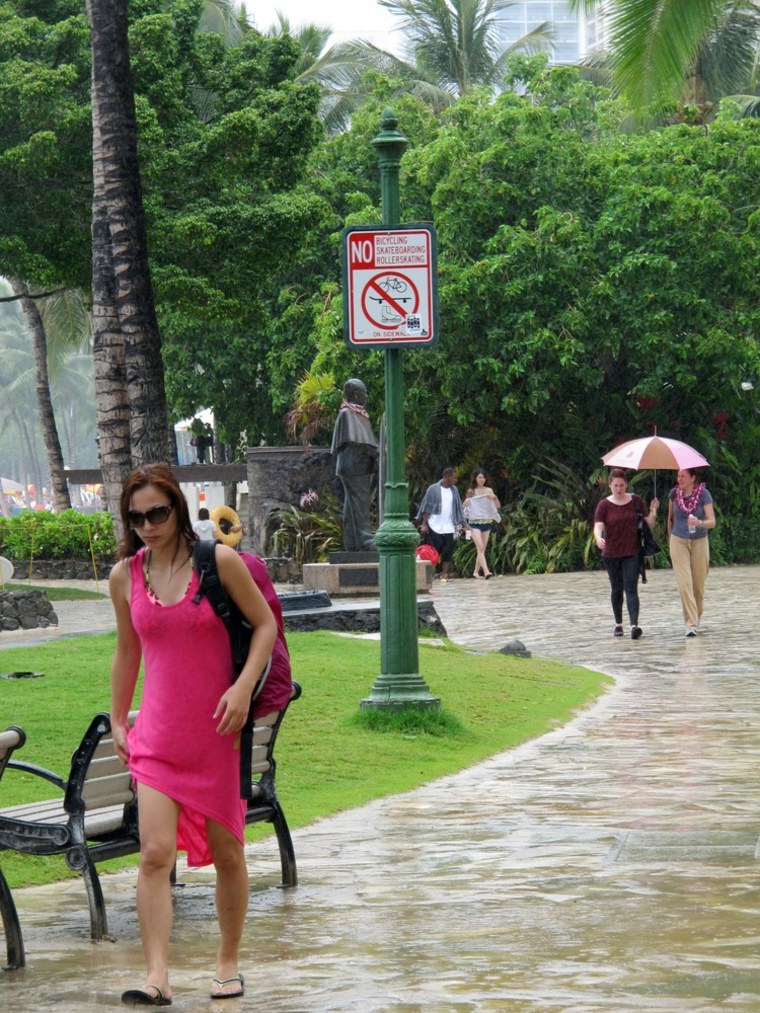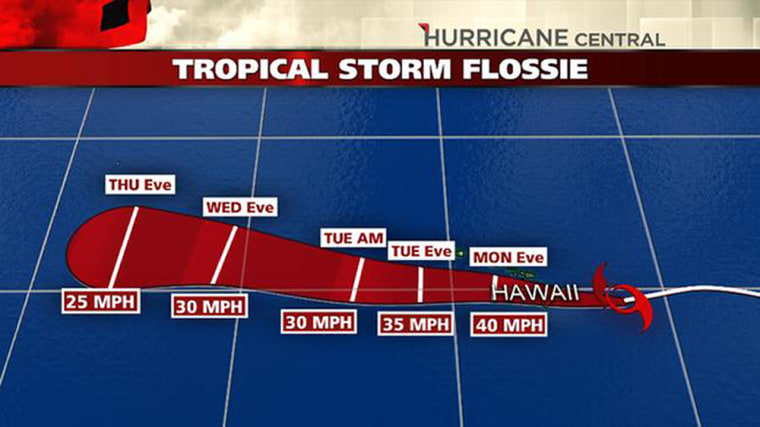Flossie, the storm bringing heavy rain and wind to the Hawaiian islands, was downgraded to a tropical depression on Monday night, the National Weather Service said.
Acting Director Tom Evans of the Central Pacific Hurricane Center told The Associated Press the storm had consistently weakened through the morning thanks to winds that broke the layers of the storm apart.
Forecasters were now saying Flossie would bring rain of up to 6 inches on parts of the Big Island and up to 2 inches on other islands.

Tropical storm warnings, in effect for much of Monday were discontinued, though emergency crews had braced for potential flooding and other damage.
Forecasters reported that the storm had shifted slightly northward overnight Monday and would miss a direct hit on the Big Island of Hawaii and instead make landfall at Maui on Monday evening and then move across Oahu and Kauai into Tuesday.
Dangerous waves were reported hitting the eastern shore of the Big Island on Monday, and TV footage showed high surf breaking on rocks near Hana in Maui, The Weather Channel reported.
Gusty winds downed trees Monday afternoon on the Big Island, knocking out power to some 5,000 customers in the Puna area, NBC station KHNL in Honolulu reported. Heavy rain was also reported as the storm tracked past the island.
As of 5 p.m. Hawaii time (11 p.m. ET) on Monday, the storm had maximum sustained winds measured at 35 miles per hour, according to the Central Pacific Hurricane Center in Honolulu. That put it below the level of 40 mph needed to categorize it as a tropical storm, KHNL reported.
And Mother Nature threw another curveball at Hawaii on Monday when an earthquake struck off Oahu, the U.S. Geological Survey reported. The 3.5 magnitude quake, which happened at 10:31 a.m., was about 8 miles off shore and was too small to create a tsunami.
Beaches, harbors and three ports on the Big Island and Maui were shut and emergency shelters were activated over the weekend, according to NBC station KHNL. College campuses, parks, trails, campgrounds and courts were also closed Monday.
Federal and state officials had made preparations for storm-related emergencies, KHNL reported.
The Federal Emergency Management Agency was also warning of dangerous conditions.
"Tropical storms can bring dangerous surf, damaging winds and both coastal and inland flooding," said FEMA Administrator Craig Fugate. "Stay away from floodwaters, never drive through flooded roadways and follow the direction of state and local officials."
With the entire state under a tropical storm warning earlier, Mike McCartney, president of the Hawaii Tourism Authority, issued a statement to visitors asking them to heed all alerts issued by emergency agencies.
“Airlines have begun canceling flights,” McCartney said. “So we continue to ask visitors to contact their airlines and hotels directly to confirm their travel plans.”
As of early Monday, all of the state’s airports were still open.
Officials earlier urged people across the state capital of Honolulu, as well as Hawaii County, Maui County and the island of Oahu to take the “appropriate precautions.”
“Be alert to Flash Flood WARNINGS because flooding may occur rapidly and threaten life and property,” Hawaii’s Civil Defense Division said in a statement Sunday.
“Evaluate your family’s emergency plans and check your emergency kits,” it added.
The emergency department on Oahu also said residents should have a seven-day supply of food and water on hand as well as flashlights and spare batteries.
Cantin said that winds could knock down power poles and blow away loose objects and that people should be careful of trying to walk or drive across water if flooding occurs.
“It takes about six inches of water to knock you off your feet and 12 to move a vehicle,” he said in a statement late Sunday.
Flossie, the sixth named storm of the eastern Pacific hurricane season, formed just over 1,000 miles west-southwest of the southern tip of Mexico's Baja California Wednesday, according to weather.com.
Jeff Black of NBC News and The Associated Press contributed to this report.
